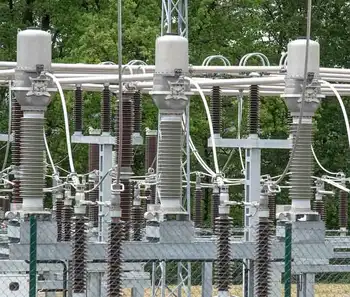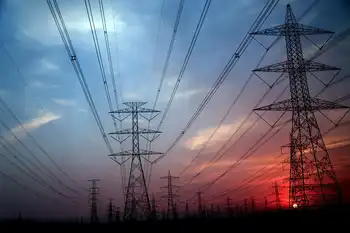Work on Fresno solar projects begins
By Fresno Bee
NFPA 70e Training
Our customized live online or in‑person group training can be delivered to your staff at your location.

- Live Online
- 6 hours Instructor-led
- Group Training Available
The three projects will be built near the towns of Five Points and Helm. They will be completed by October and generate a combined 50 megawatts of electricity — enough to meet the needs of about 15,000 homes, according to PG&E.
The sites represent the first big push in PG&E's efforts to develop solar projects that it will own and operate. PG&E expects to build 250 MW of power-producing capacity over the next five years.
The utility has hired Cupertino Electric Inc. to build two of the plants: a 20 MW plant on a 130-acre site just west of Helm, and a 15 MW project on 160 acres south of Five Points.
The third plant, a 15 MW project on 160 acres southwest of Five Points, will be built by SOLON Corp. for PG&E.
Each site will have thousands of crystalline silicon photovoltaic panels that convert sunlight directly into electricity. PG&E already owns the vacant land for the plants.
"The Central Valley holds tremendous potential as a source of clean energy for California," said Mike Jones, a power-generation manager for PG&E. "Our solar projects in the region are a win for the local economy and for the state's environment."
PG&E spokesman Blair Jones said the Fresno County projects should create about 500,000 hours of paid work. Jones said the contractors will do their own hiring, but "it's our goal that they use local residents to build these facilities where possible."
Autumn Casadonte, a spokeswoman for San Jose-based Cupertino Electric, said her company expects to employ more than 200 people over the course of its work on the two sites. Most of those will be hired from within Fresno County, where the unemployment rate of about 17 is well above the state and national average.
A representative for SOLON, an Arizona-based subsidiary of Germany's SOLON SE, said the company will also use local labor to build its project.
The three PG&E arrays will rank among the biggest solar photovoltaic plants built in the Valley when they begin producing electricity this fall. They will rival 20 MW and 19 MW plants under construction by Eurus Energy America near Avenal, in western Kings County.
Cupertino Electric recently completed a 6.7 MW plant in Porterville for Southern California Edison, but the two plants it will build in Fresno County are a step up for the company. "The projects are progressively getting bigger and bigger," Casadonte said.
The state's major utilities, including PG&E and Southern California Edison, are under pressure to increase their proportion of electricity from solar and other renewable or "green" sources to 33 by 2020. In 2009, the most recent available information from the California Public Utilities Commission, renewable energy accounted for about 15 of PG&E's retail sales and about 17 of Edison's sales.
It's not going to come cheap, however. PG&E's cost to build its solar projects is confidential, but they will be passed along to the utility's customers.
Blair Jones said the average residential customer can expect to pay about 58 cents more on his or her bill per month by 2015 to cover the cost of developing the 250 MW of solar capacity that PG&E will own and operate.
"Solar tends to be more expensive than some other sources of energy, but provides many benefits," Jones said. And growing demand for solar from PG&E and other utilities "is also helping to drive innovations and economies of scale that are helping bring down solar costs at a rapid rate."
PG&E also continues to increase its purchases of electricity from independent power providers with a goal of an additional 250 MW of solar power within the next five years. The utility has a handful of power-purchase agreements in place for solar power projects — both operating and on the drawing board — in Fresno County.











